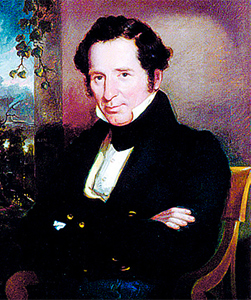About Us
What are we aiming at?”
That’s the question our university’s first president, Daniel Coit Gilman, asked at his inauguration in 1876. What is this place all about, exactly? His answer:
“The encouragement of research . . . and the advancement of individual scholars, who by their excellence will advance the sciences they pursue, and the society where they dwell.”
Gilman believed that teaching and research go hand in hand—that success in one depends on success in the other—and that a modern university must do both well. He also believed that sharing our knowledge and discoveries would help make the world a better place.
In 145 years, we haven’t strayed from that vision. This is still a destination for excellent, ambitious scholars and a world leader in teaching and research. Distinguished professors mentor students in the arts and music, humanities, social and natural sciences, engineering, international studies, education, business, and the health professions. Those same faculty members, along with their colleagues at the university’s Applied Physics Laboratory, have made us the nation’s leader in federal research and development funding every year since 1979.
That’s a fitting distinction for America’s first research university, a place that has revolutionized higher education in the U.S. and continues to bring knowledge and discoveries to the world.
Also see: Johns Hopkins Fact Book (PDF)
History & Mission
The university takes its name from 19th-century Maryland philanthropist Johns Hopkins, an entrepreneur with Quaker roots who believed in improving public health and education in Baltimore and beyond.
Previously adopted accounts portray Johns Hopkins as an early abolitionist whose father had freed the family’s enslaved people in the early 1800s, but recently discovered records offer strong evidence that Johns Hopkins held enslaved people in his home until at least the mid-1800s. Additional information about the university’s investigation of this history is available on the Hopkins Retrospective website.

Mr. Hopkins, one of 11 children, made his fortune in the wholesale business and by investing in emerging industries, notably the Baltimore and Ohio Railroad, of which he became a director in 1847. In his will, he set aside $7 million to establish a hospital and affiliated training colleges, an orphanage, and a university. At the time, it was the largest philanthropic bequest in U.S. history.
Johns Hopkins University opened in 1876 with the inauguration of our first president, Daniel Coit Gilman. He guided the opening of the university and other institutions, including the university press, the hospital, and the schools of nursing and medicine. The original academic building on the Homewood campus, Gilman Hall, is named in his honor.
“Our simple aim is to make scholars, strong, bright, useful, and true,” Gilman said in his inaugural address.
In the speech, he defined the model of the American research university, now emulated around the globe. The mission he described then remains the university’s mission today:
To educate its students and cultivate their capacity for lifelong learning, to foster independent and original research, and to bring the benefits of discovery to the world.
Or, summed up in a simple but powerful restatement of Gilman’s own words: “Knowledge for the world.”

Hopkins Retrospective
An ongoing effort to expand our understanding of the history of Johns Hopkins and weave that history into the university experience
Learn more: The Baltimore Sun‘s 1873 obituary for Johns Hopkins

